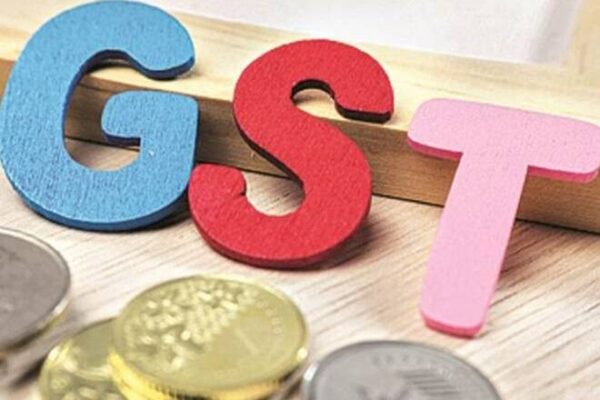- The deadline to reconcile FY 2019-20 GST data is here, i.e. September 2020
- The existing GST returns in forms GSTR-1, GSTR- 2A and GSTR-3B are getting a complete makeover
- Refer to GST Compliance Calender for month of September,2020 as published on our site.
The government has recently made some changes in the GST return filing system. The return forms proposed earlier called the RET forms with ANX (annexures) have been shelved. The existing GST returns in forms GSTR-1, GSTR- 2A and GSTR-3B are getting a complete makeover. GSTR-1 relates to returns filed by suppliers for all outward supplies. GSTR-2A relates to purchases of a business. While GSTR-3B is a return for payment of GST taxes. Let’s understand some key tasks that taxpayers must attend to during the month of September and also look at the new forms for taxpayers.
New Return form GSTR-2B
A new statement called GSTR-2B, which is applicable for all normal taxpayers has been launched. The information in GSTR-2B is being auto-populated from GSTR-1. Further, GSTR-1 details will be auto populated into GSTR-3B, to pay GST dues. GSTR-2B and auto-linking of GSTR-1 with GSTR-3B are being implemented from July and August 2020 return period onward.
Shifting from GSTR-2A to GSTR-2B – The benefits and road ahead
There is a shift in the need to reconcile purchase registers from GSTR-2A to GSTR-2B from July 2020 return period onwards. In this statement, taxpayers can view the summary of eligible and ineligible ITC with a further invoice-wise break up of purchases as well as imports. For instance, ITC for August 2020 return period will be taken based on the documents reported by their respective suppliers between 12th August and 11th September 2020. (For details regarding GSTR-2B please refer to our article)
On comparing GSTR-2B with the existing GSTR-2A, details reported in GSTR-2B for a month will remain constant once reported by the respective suppliers. On the other hand, GSTR-2A is a dynamic statement. If a user checks his GSTR-2A for August 2020 on 19th September 2020, the details of supplies in it may not be the same as 12th September 2020.
The move can aid registered buyers in avoiding ITC reconciliation hassles and inconsistencies in GSTR-2A. It is because GSTR-2A changes every time their suppliers make changes to the invoices reported. The taxpayers and government can also easily compare and be sure of the total ITC that the taxpayer must avail for a month, reducing the scope for litigation.
The department will be verifying the ITC claims in GSTR-3B on a future date, it need not lean upon taxpayers’ contention that the dynamic GSTR-2A as on a particular date was referred for ITC claims in GSTR-3B. There is also a need to automate the ITC claims in GSTR-3B via introducing a facility to accept and reject the eligible ITC found in GSTR-2B. An additional window to choose and track the 10% provisional ITC claims will be an icing on the cake.
Deadline to reconcile GST data of FY 2019-20 for September
Also, note that the deadline to reconcile FY 2019-20 GST data is here, i.e. September 2020. To recap, the September return period of a year following a financial year is significant as per the GST law. The government provides time to rectify mistakes made in regular returns during a relevant financial year in the September returns of the next financial year which is filed subsequently.
Return for September of a year is the last return period during which taxpayers can rectify any omitted or incorrect details in the returns filed during the previous financial year. These corrections are crucial for an accurate closure of that financial year. They will also form an important checkpoint during the GST audit.
To make sure ITC is accurately claimed for a financial year, registered taxpayers need to reconcile GSTR-1 with GSTR-3B from 1st April 2019 to 30th September 2020, for invoices raised in FY 2019-20 and associated debit-credit notes. After that, they can report missed invoices or make amendments in GSTR-1 of September 2020 to be filed on or by 11th October.
Similarly, they must reconcile Input Tax Credit (ITC) for FY 2019-20 claimed in GSTR-3B with GSTR-2A and purchase records for the same period given above. Accordingly, they can claim any missed out ITC or reverse the excess claims before filing GSTR-3B on or by 20th October (22nd or 24th for small taxpayers).
Complexities in Annual Reconciliation this year
For FY 2019-20, taxpayers may face complexities in ITC reconciliation due to the inclusion of CGST Rule 36(4). Let’s understand this rule a bit more. Between 1st April 2019 to 8th October 2019, taxpayers were allowed to claim ITC in their GSTR-3B on a provisional basis without restricting the upper limit. From 9th October 2019 to 31st December 2019, a 20% restriction was imposed on provisional credits every month based on eligible ITC in GSTR-2A. It was reduced to 10% from 1st January 2020 onwards. As a relief from the pandemic, the restriction was suspended between February 2020 to August 2020.
However, taxpayers must claim ITC as per GSTR-2A cumulatively from February to August from September 2020 onwards. There can be overlap or spillover in the ITC claims due to these developments over the past year, leading to complications while reconciling for September 2020 returns. To top it, the tax professionals must parallelly guide their clients for all the changes introduced via GSTR-2B. (For details regarding computation ITC after applying restriction under Rule 36(4) please refer to our article on the subject)
More compliances in September 2020
Apart from the above ITC reconciliation, taxpayers must also complete filing of GSTR-9 and 9C for FY 2018-19 by 30th September 2020 to avoid a late fee. Tax professionals may find it difficult to meet various deadlines lined up in September 2020 for small taxpayers. As a relief measure, small taxpayers can file their GSTR-3B from May to August 2020 within specified dates of September 2020 without late fee. Hence, the number of returns to be filed may be tasking for professionals.
Hence, from all the compliance listed above, it can be understood that September 2020 is likely to be a busy month, especially for tax professionals. Further, the yearly ITC reconciliation for FY 2019-20 done during September-October 2020 requires additional attention to Rule 36(4) as well as shifting to GSTR-2B from GSTR-2A from July 2020 onwards.
Implications of not completing GST Reconciliation timely
Suppose the taxpayer has missed completing yearly reconciliation before filing September 2020 returns. In that case, he will face discrepancies while preparing the annual returns for FY 2019-20. Unfortunately, by then, the window to claim any eligible ITC and make necessary amendments to invoices would have been missed, leading to excess tax outflow.
Source: livemint.com
***
[rainbow]Don’t miss the next GST Update / Article / Judicial pronouncement[/rainbow]
Subscribe to our newsletter from FREE to stay updated on GST Law
Resolve your GST queries from national level experts on GST free of cost.
TW Editorial Team comprises of team of experienced Chartered Accountants and Advocates devoted to spread the knowledge of GST amongst the various stakeholders.



